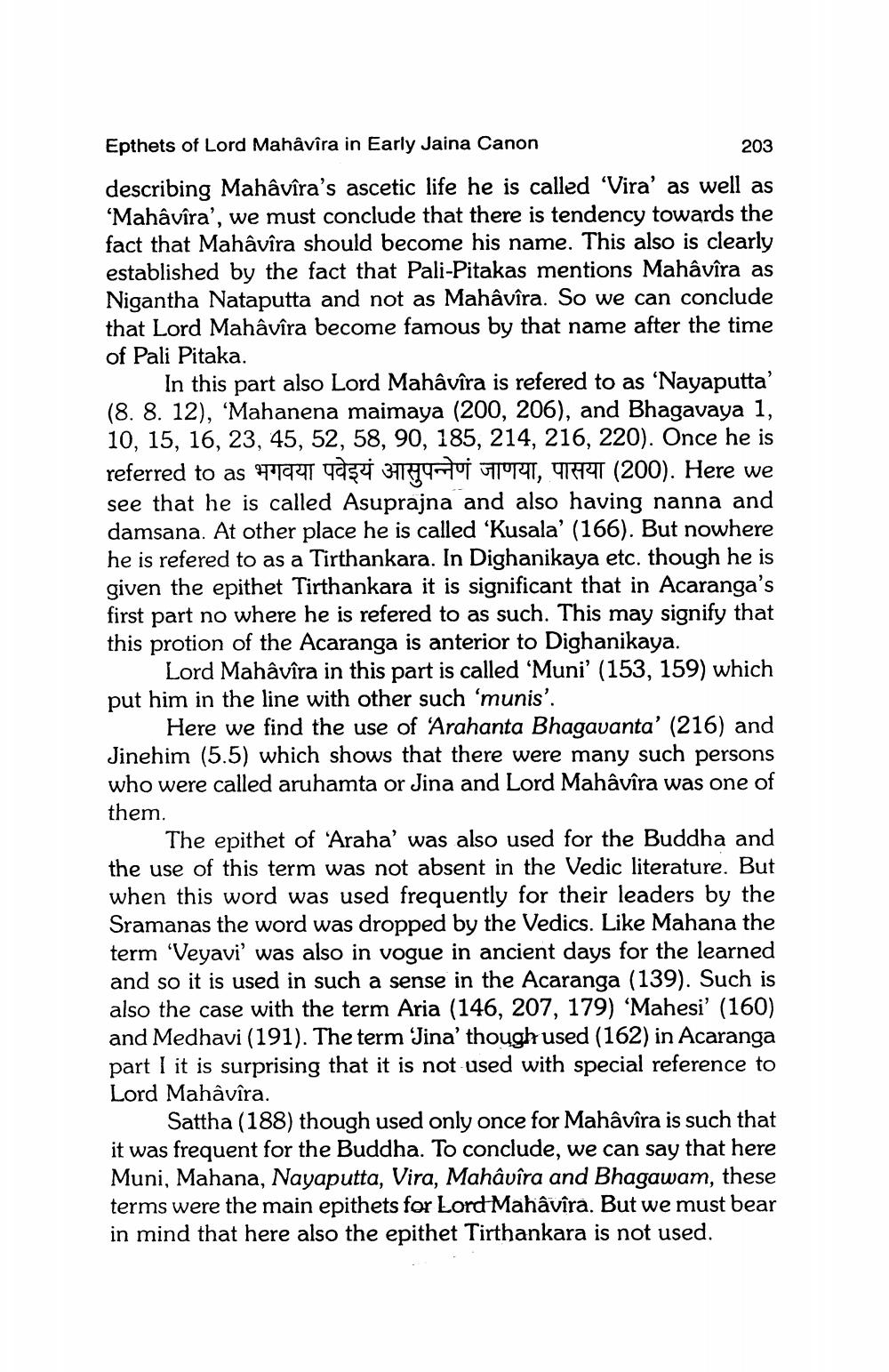________________
Epthets of Lord Mahâvîra in Early Jaina Canon
203 describing Mahâvîra's ascetic life he is called 'Vira' as well as ‘Mahâvîra', we must conclude that there is tendency towards the fact that Mahâvîra should become his name. This also is clearly established by the fact that Pali-Pitakas mentions Mahâvîra as Nigantha Nataputta and not as Mahâvîra. So we can conclude that Lord Mahâvîra become famous by that name after the time of Pali Pitaka.
In this part also Lord Mahâvîra is refered to as 'Nayaputta' (8. 8. 12), 'Mahanena maimaya (200, 206), and Bhagavaya 1, 10, 15, 16, 23, 45, 52, 58, 90, 185, 214, 216, 220). Once he is referred to as "194T 4234 3194 01 FPT, YR44T (200). Here we see that he is called Asuprajna and also having nanna and damsana. At other place he is called 'Kusala' (166). But nowhere he is refered to as a Tirthankara. In Dighanikaya etc. though he is given the epithet Tirthankara it is significant that in Acaranga's first part no where he is refered to as such. This may signify that this protion of the Acaranga is anterior to Dighanikaya.
Lord Mahâvîra in this part is called 'Muni' (153, 159) which put him in the line with other such ‘munis'.
Here we find the use of 'Arahanta Bhagavanta' (216) and Jinehim (5.5) which shows that there were many such persons who were called aruhamta or Jina and Lord Mahâvîra was one of them.
The epithet of 'Araha' was also used for the Buddha and the use of this term was not absent in the Vedic literature. But when this word was used frequently for their leaders by the Sramanas the word was dropped by the Vedics. Like Mahana the term 'Veyavi' was also in vogue in ancient days for the learned and so it is used in such a sense in the Acaranga (139). Such is also the case with the term Aria (146, 207, 179) ‘Mahesi' (160) and Medhavi (191). The term Jina' though used (162) in Acaranga part I it is surprising that it is not used with special reference to Lord Mahâvîra.
Sattha (188) though used only once for Mahâvîra is such that it was frequent for the Buddha. To conclude, we can say that here Muni, Mahana, Nayaputta, Vira, Mahâvîra and Bhagawam, these terms were the main epithets for Lord Mahâvîra. But we must bear in mind that here also the epithet Tirthankara is not used.




